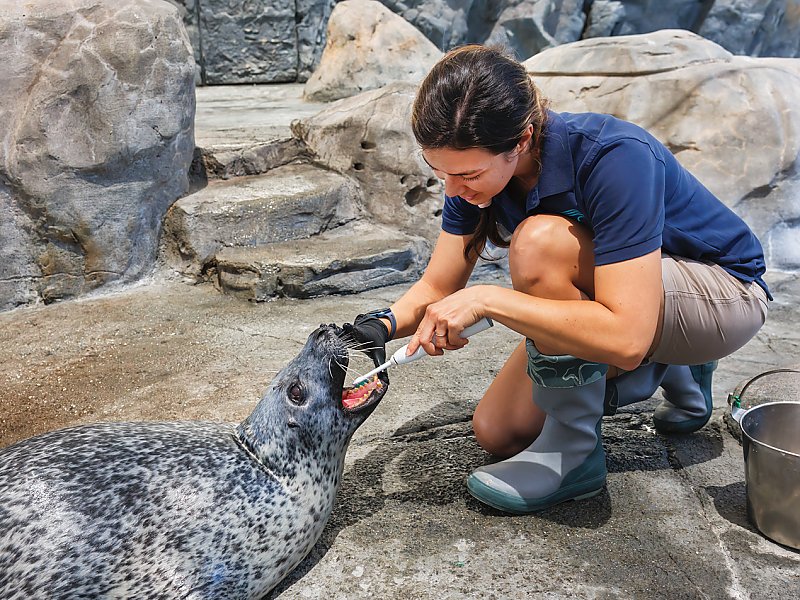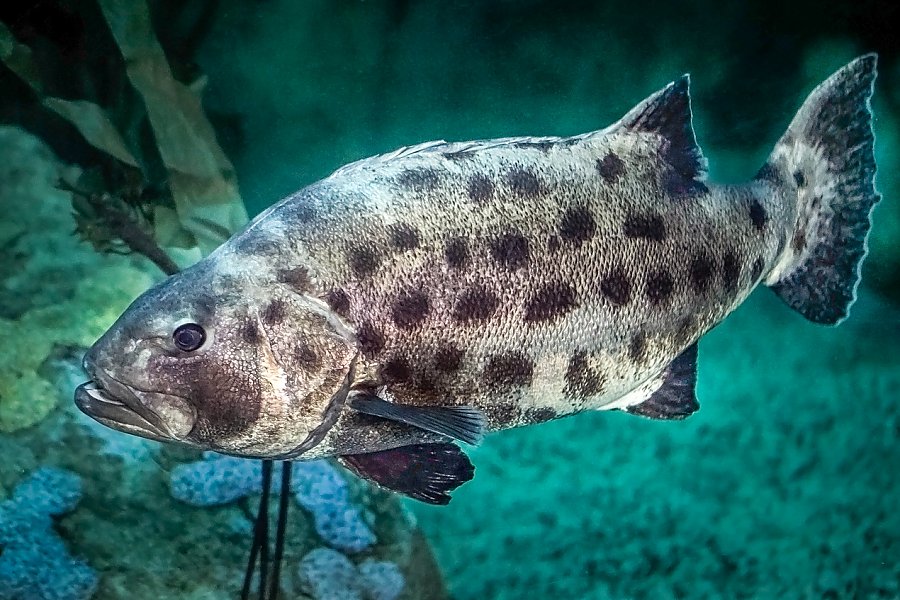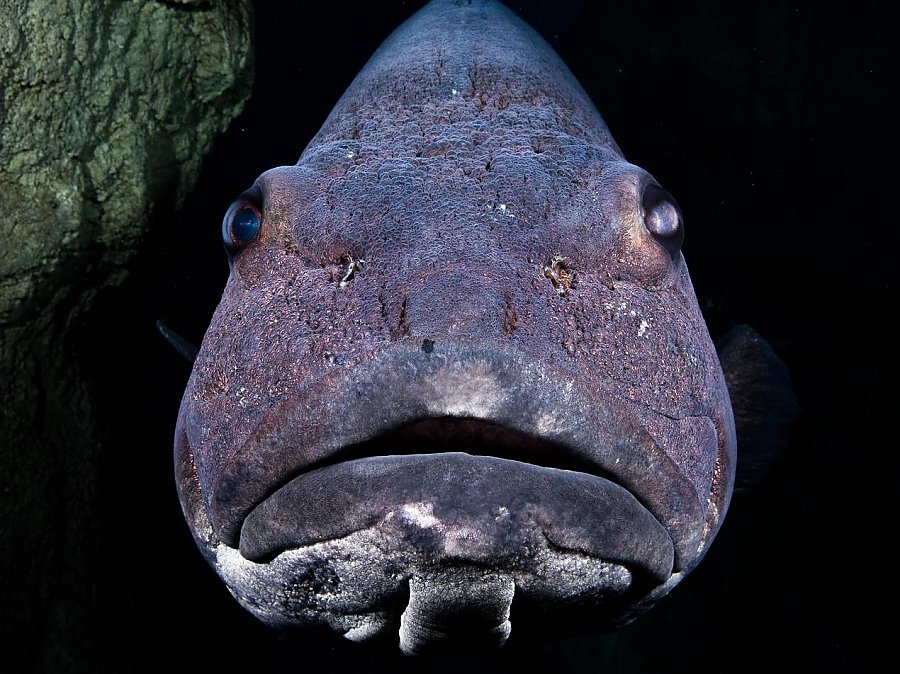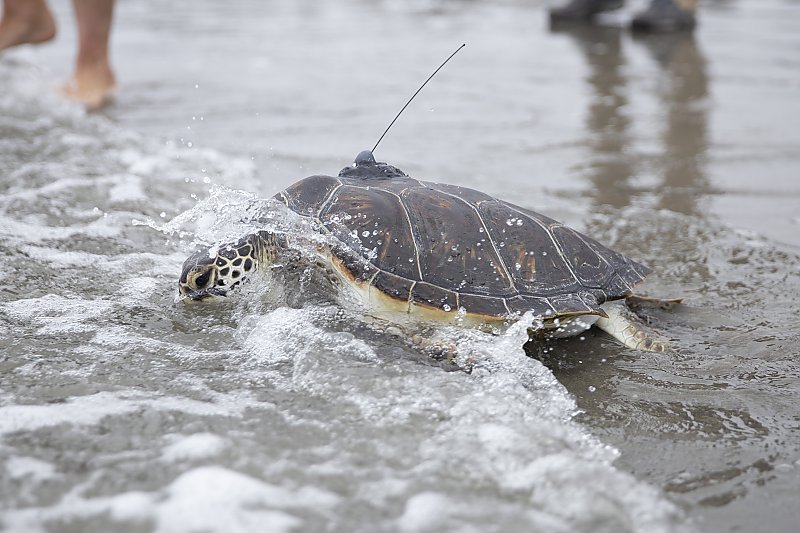
We are Setting the Standard in Animal Well-Being and Welfare
The Aquarium of the Pacific and its staff are deeply committed to leading the way in setting new standards in compassionate animal care.
The Aquarium is helping this critically endangered fish re-establish populations off our coast.

Giant Sea Bass (*Stereopsis gigas^) Credit: Aquarium of the Pacific/Robin Riggs
Giant sea bass are a critically endangered fish native to the nearshore kelp forests off California’s coast. The Aquarium of the Pacific has giant sea bass in the Honda Blue Cavern Habitat.
In 2016 the Aquarium was the first institution to successfully hatch and raise a giant sea bass. At the time, only one other facility had preliminary success in breeding giant sea bass.
After this initial success, the Aquarium of the Pacific’s husbandry staff planned a regional meeting to gather aquarium professionals and local researchers who had been working with giant sea bass, and multiple partnerships were formed between universities, aquariums, and government agencies. The Aquarium has since held periodic symposiums for partner organizations to share research and conservation achievements.

Giant Sea Bass in the Blue Cavern Exhibit. Credit: Robin Riggs
This large fish species was once abundant in the early 20th century, but overfishing by commercial fisheries led to a drastic decline in their population.

Credit: Aquarium of the Pacific/Ken Kurtis
In the 1970s, concerns rose about the survival of the giant sea bass leading to the fish species’ protection in the 1980s.

Credit: Aquarium of the Pacific/Ken Kurtis
With all the work to bolster the population of the giant sea bass, scientists have been able to study and learn more about the giant sea bass.

The Aquarium of the Pacific and its staff are deeply committed to leading the way in setting new standards in compassionate animal care.

Join us, as your support of our conservation and education programs will help the Aquarium of the Pacific empower and inspire young ocean stewards and positively transform our oceans for generations to come.

Adopt an axolotl at the $100+ level to receive a special Valentine’s themed box that includes a snuggly axolotl plush, customizable Valentine’s Day card, an animal fact card and candy. Plus, the first 60 to adopt an axolotl will get an additional gift – an axolotl themed slime! Adopt by February 4 to ensure holiday delivery. While supplies last!